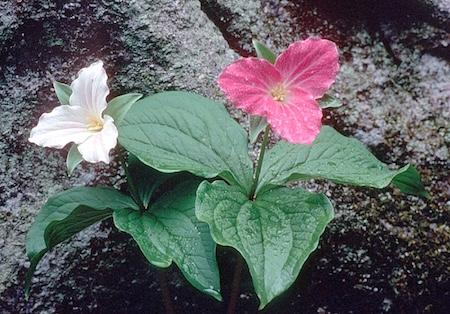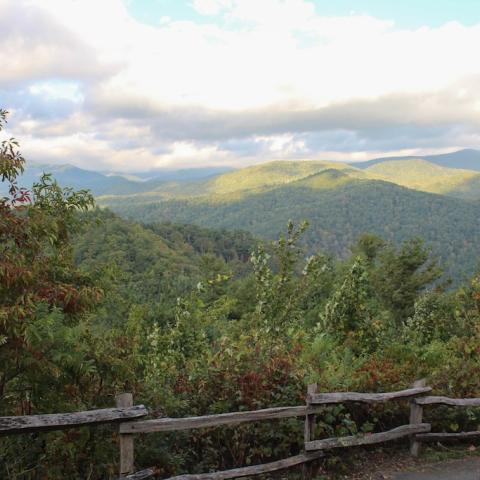
Trilliums at Great Smoky Mountains National Park/NPS file
Wildflower season is about to bloom in Great Smoky Mountains National Park, and the National Park Service wants to remind visitors that there are group size limits at Whiteoak Sink. Individuals and small groups of eight or fewer people may access the Whiteoak Sink area throughout the wildflower season Tuesday, April 1 through Sunday, May 4.
Whiteoak Sink is a unique, sensitive area that hosts many rare plants. Park managers limit group size to protect sensitive wildflower species from trampling. Overuse of the area causes impacts like damage to plants and soil compaction when large groups crowd around plants off-trail to take photos or closely view flowers. Parking is limited, so visitors should plan ahead and come prepared with alternative destinations in case they do not find parking available at Whiteoak Sink. Parking is not allowed on road shoulders.
A team of volunteers on site will provide wildflower viewing information and collect monitoring data. Park managers have monitored sensitive wildflower species in the Whiteoak Sink area since 2016.
Great Smoky Mountains National Park in Tennessee and North Carolina is world famous for its wildflower diversity and has more kinds of flowering plants than any other North American national park.
Spring ephemerals include flowers such as trillium (the park has 10 different species), lady slipper orchids, showy orchis, crested dwarf iris, fire pink, columbine, bleeding heart, phacelia, jack-in-the-pulpit, little brown jugs, and violets, to name just a few. Suggested wildflower walks.
In summer the display continues with brilliant red cardinal flowers, pink turtleheads, Turk’s cap lily, small purple-fringed orchids, bee-balm, butterfly-weed, black-eyed susans, jewel weed, and many others.
By late summer and through the fall, goldenrod, wide-leaved sunflowers, tall ironweed, mountain gentian, monk’s hood, coneflowers, and numerous varieties of asters begin to bloom. Purple umbels of sweet Joe-Pye-weed stretch towards the sky and can reach heights of ten feet.
Wildflowers in the Smokies face a number of human-instigated threats, including air pollution, off-trail hiking, and poaching.
Long term research conducted in the park shows that ground level ozone pollution is injuring at least 30 species of native plants. Ground level ozone, sometimes called "smog," is created when nitrogen oxides from automobiles and factories mix with sunlight and natural hydrocarbons. Black-eyed susan, tall milkweed, and coneflower are among the most vulnerable wildflowers.
Plant poaching appears to be on the rise in the Smokies. Some commercial poachers remove hundreds of plants each trip and make several trips annually. In recent years groups of poachers have been apprehended with well over 1,000 American ginseng roots. Aside from ginseng, the most popular targets are orchids and trilliums. Overzealous gardeners take a serious toll by removing showy wildflowers for transplanting back home and careless hikers trample delicate wildflowers when they leave established trails.
If you observe people digging plants in the park, report the activity to the nearest ranger station or call (865) 436-1230.




 Support Essential Coverage of Essential Places
Support Essential Coverage of Essential Places






